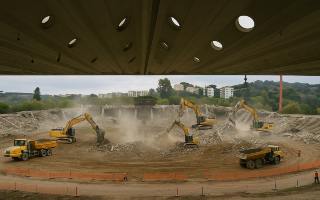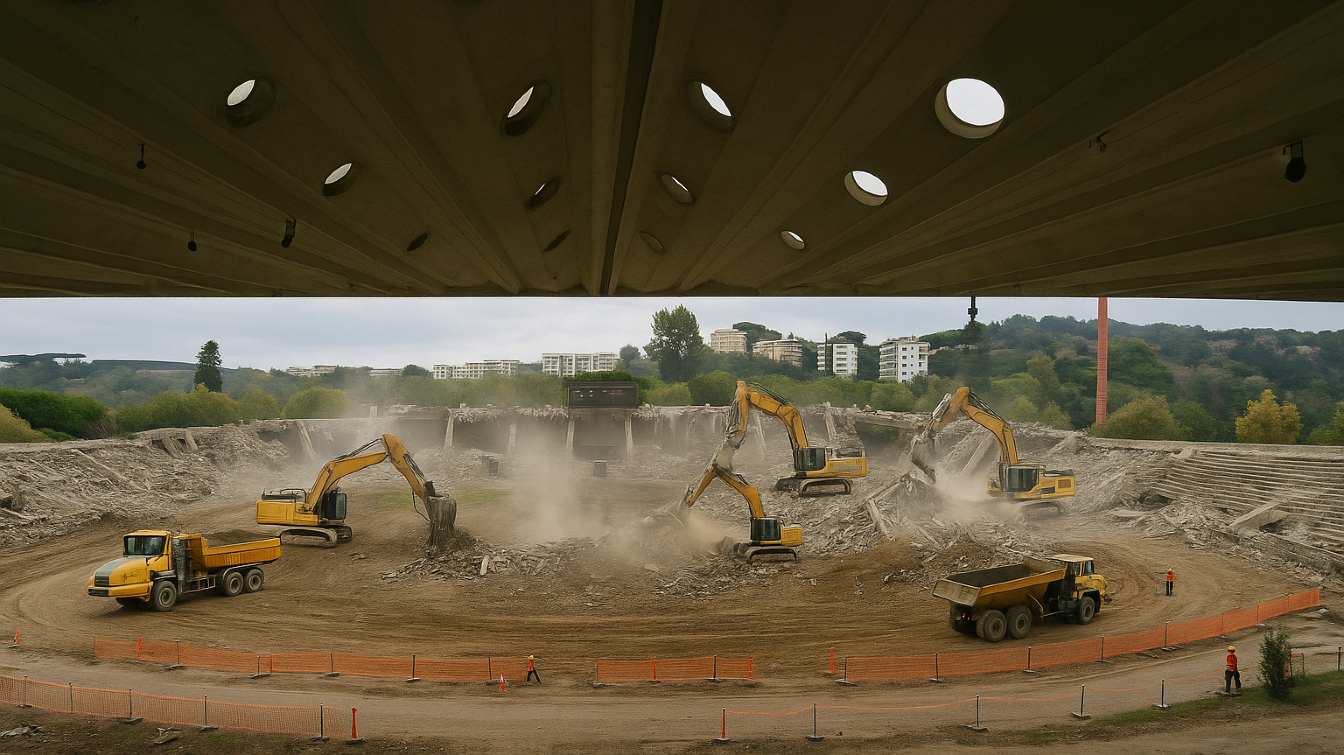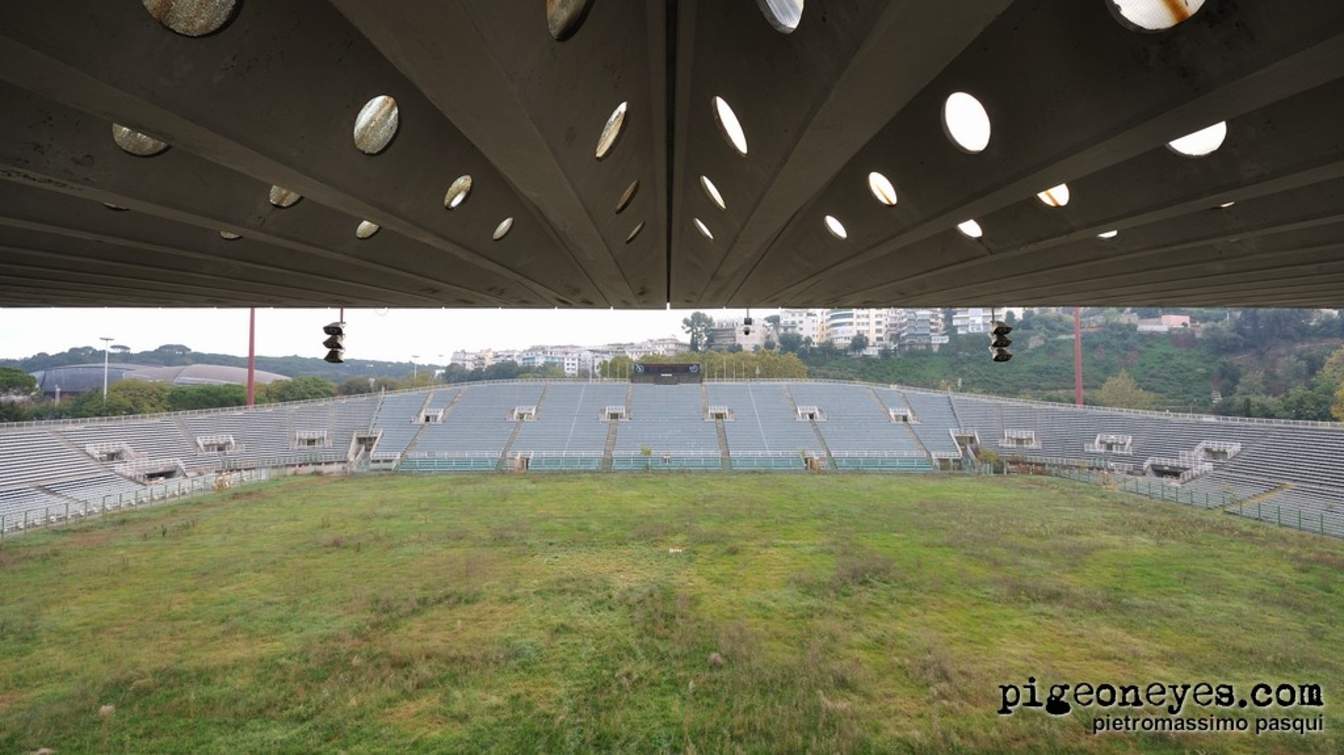Italy: Lazio still without a stadium of their own. Two proposals blocked
source: StadiumDB.com; author: Jakub Ducki
 Stadio Flaminio has been falling into disrepair for years. Despite multiple attempts at revitalization, none have come to fruition. Today, the most hotly debated proposal comes from Lazio’s owner, Claudio Lotito. But with mounting resistance and bureaucratic hurdles, is Flaminio facing yet another chapter of stagnation?
Stadio Flaminio has been falling into disrepair for years. Despite multiple attempts at revitalization, none have come to fruition. Today, the most hotly debated proposal comes from Lazio’s owner, Claudio Lotito. But with mounting resistance and bureaucratic hurdles, is Flaminio facing yet another chapter of stagnation?
Advertisement
Opposition to Lotito’s Project
Giulio Castelli, spokesperson for Stadio Flaminio Committee, has voiced strong opposition to Lotito’s stadium expansion plans. Speaking on Radio Roma Sound just after troubling clashes ahead of the Derby della Capitale, Castelli emphasized that the stadium’s capacity should not exceed 23,000–24,000 spectators—a limit residents consider acceptable from a safety and logistical standpoint.
He pointed out that Flaminio is located in a densely populated, central area of Rome, with the stands just a few dozen meters from residential buildings. Combined with narrow road infrastructure and vital nearby transport hubs, the plan appears to him as urbanistic madness.
Recent clashes near Piazzale di Ponte Milvio—despite the open space around Stadio Olimpico—highlight how dangerous the situation could become if thousands of fans were instead funneled into the Flaminio area.
No feasibility study, just media hype?
Another sticking point is the formal status of Lotito’s proposal. According to the City’s Department of Sport (Campidoglio), the documents submitted do not meet the legal requirements for a feasibility study. What has been presented is merely a preliminary economic outline, lacking any detailed technical plans, environmental assessments, or transport analyses.
In practice, despite significant media attention, the process to convert Flaminio into Lazio’s home stadium hasn’t even begun. Meanwhile, time is ticking—Lotito has announced he wants Lazio to play its first match at the new stadium by June 2029. Given the complexity of such an investment, any delay reduces the likelihood of that goal being met.
Roma Nuoto rejected despite local compatibility
Parallel to Lotito’s bid, another concept was put forward by Roma Nuoto, a local sports organization with deep roots in the area. Their proposal involved downsizing the stadium to 7,500 seats, removing gates and large commercial zones, and maintaining close integration with the surrounding neighborhood. It was a more community-oriented, multifunctional concept, supporting minor sports, including women’s football and rugby.
However, the City Council rejected this proposal almost unanimously. The official reasoning? That it would distort the stadium’s character,
originally intended to host national and international events. In the view of the city authorities, Flaminio should remain a major football stadium, not a downsized local venue with limited functionality.
 Visualization of Stadio Flaminio demolition
Visualization of Stadio Flaminio demolition
Clashing interests and political power struggle
The Flaminio issue has sparked conflict not only between residents and investors but also within Rome’s political landscape. While the majority in the City Council holds that Roma Nuoto’s plan falls short, the opposition—led by Fratelli d’Italia and the League—warns that Rome could soon be left with nothing: neither the Roma Nuoto plan nor any concrete proposal from Lazio.
Federico Rocca of FdI notes that if Roma Nuoto’s project faced compatibility issues with the Superintendence, Lotito’s plan—if it’s ever formally submitted—will likely face even more obstacles. Even among council members who didn’t vote against the Roma Nuoto plan, some are warning that Flaminio may be heading for another winter of decay
if the situation doesn’t change.
Advertisement
 StadiumDB
StadiumDB